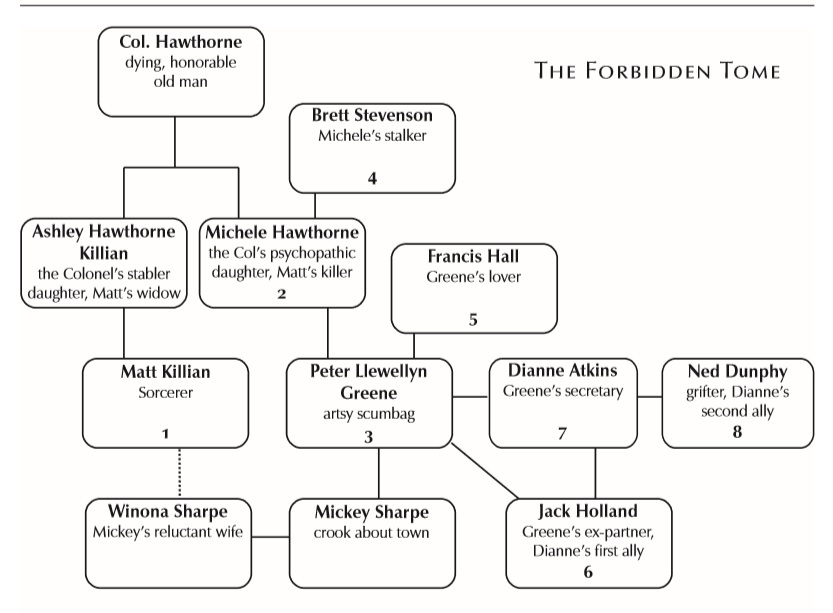“Everyone knows” what a relationship map is, but they’re definitely not all the same thing, especially with these variables exposed:
- Whether the player-characters are in it
- Group preparation vs. single-person construction
- Criteria for links/connectors
I also had prepared more thoughts on the Sorcerer’s Soul method, with the depicted Forbidden Tome map as the example, which is taken from The Big Sleep. Let me know if you’re interested and I’ll get a little video up.
I’m not sure what was up with my microphone, but my voice input is fuzzy and blaring. I tried to correct it in post-production, but it’s not great.


4 responses to “Monday Lab: The Other Kind of Map”
Hillfolk
There is an incredible game that use relationship maps as a tool for setting scenes: Hillfolk from Robin D Law. I love Robin's discussion about "immersionnists", as it totally apply to myself and what I'm looking in a RPG game, something the game try to challenge.
The relationship defines relations in the groupe of the PC by asking to everyone, "what emotional retribution do you want from B" (where the emotional retribution can be implied from "what do you want" from him), and B then follows by saying "this why you cannot have it". For instance in our game, "A (a woman), wants respect from B". B : "you can't have it because… you're a woman". Which is not an objective statement but the view of B's character. Of course, the game make no sense if the player sticks to its statement, the goal is to challenge these relationship, to give emotional retribution or refuse it, and the system is built to facilitate this (like, it's not possible to always refuse).
In this game, the GM is not the only one to set scenes. Every one has a scene to set, like there is a turn order for this. The game is focused on "dramatic scenes", which means scene with a focus on wether this emotional retribution will happen or no.
The relationship map is one of the tools that helps everyone to set a scene. By looking the relationship map, you can check what emotional retribution are at stake, who you wants to be involved in the scene, who will be asking for emotional retribution and who is in position to give in.
I had incredible time by playing this game, so much that I want to test different settings, because it leads totally new way of setting the scenes, and the system totally encourage this. I just hope my groupe will share my motivation. 🙂 I thought it was worth to mention.
It is a good example,
It is a good example, especially since it's almost the diametric opposite of the maps in The Sorcerer's Soul, which have no emotional content at all and specifically provide no guidance for reactions, responses, or obligations.
I also recommend looking at Vincent Baker's In a Wicked Age …, which uses connections of what he calls the characters' "best interests," and also vectors of opposition to set how a given character poses some barrier or counter to those interests for another character. In this case, the precise relationship (kin, sex, obligation, community membership, et cetera) may be anything, including nothing at all, and the statements representing the interests and oppositions may or may not include intentions or emotions.
I’m coming late, but I’m
I'm coming late, but I'm interested in these thoughts developed from Sorcerer's Soul based on the Forbidden Tome example, if you still have the time and mood to upload the video you wrote about!
That may have to wait for a
That may have to wait for a little while. I am currently very far behind on finishing the videos for the last few weeks of play sessions. However, I've added this one to the list.